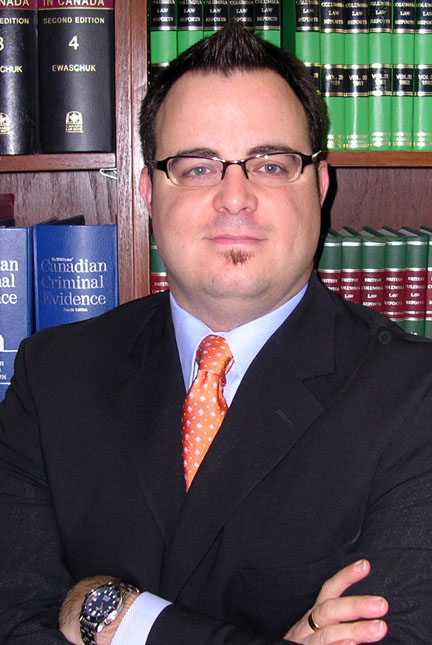The Supreme Court of Canada today issued a ruling that both limits the scope of criminal expert testimony and expands the scope of the “curative proviso” to disregard errors at trial.
In
Sekhon v. R
, the SCC upheld — in a 5-2 split ruling — a British Columbia drug conviction, despite a significant error at trial. While the majority ruled in favour of using the curative proviso to disregard the error, Chief Justice Beverley McLachlin and Justice Louis Lebel dissented and would have allowed a new trial.
The error in question pertains to the admissibility of police expert testimony at a drug trial. The appellant, Ajitpal Sekhon, was caught trying to cross the border into Canada with 50 kilograms of cocaine hidden in a secret compartment of the pickup truck he was driving.
Sekhon claimed a friend had asked him to drive the truck into Canada, and he didn’t know drugs were hidden in the vehicle. The trial judge rejected that claim, based in part on expert testimony by a police officer who said, in all his years of service, he had never encountered a “blind courier.”
On appeal, counsel for Sekhon argued the police officer’s testimony was anecdotal and had no bearing on whether their client knew about the drugs on board. That appeal was dismissed, and the dismissal upheld today by the Supreme Court.
Interestingly, the SCC agreed with the appellant’s assertion the trial judge erred significantly in allowing the police testimony. The ruling, written by Justice Michael Moldaver, referred back to criteria for admissibility, including “necessity in assisting the trier of fact” and the Mohan relevance test:
“The officer’s evidence was not necessary because determining whether S knew about the cocaine was not beyond the knowledge and experience of the judge and was not technical or scientific in nature. Moreover, the guilt or innocence of accused persons that the police officer had encountered in the past was not legally relevant to S’s guilt or innocence.”
Despite this error, the SCC made use of the curative proviso — which disregards errors if they are (a) harmless or (b) do not result in a miscarriage of justice — to uphold the original verdict, based on other overwhelming evidence against Sekhon (including the fact he removed a key fob used to open the hidden compartment before handing the keys to border officials).
“While the trial judge’s error in this case is not harmless, the evidence of S’s guilt is so overwhelming that a trier of fact would inevitably convict. Hence, the second branch of the curative proviso can be applied to sustain S’s convictions.”
McLachlin and Lebel strongly disagreed. While they also found the police officer’s testimony to be inadmissible, they would have allowed a new trial based on a stricter interpretation of the curative proviso.
“The issue in applying the second branch [of the curative proviso],” writes McLachlin, “is not whether the trial judge could make the inference he did or whether that inference was determinative of guilt, but whether it was the only rational conclusion. In this case, it was not.”
Eric Gottardi represented Sekhon before the Supreme Court. He says despite the loss for his client, the ruling is an important one in that it places limits on the kind of expert testimony allowed at criminal trials.
“It was the first case that the court had heard on this type of ‘custom of the trade’ evidence, so I think the clarification was needed,” he says. “This is happening every day in the courts, so I think it was important to emphasize that police experts can’t point their finger at a particular accused and say this person is guilty because everyone else that they’ve dealt with in these circumstances has been guilty.”
That being said, Gottardi is concerned the ruling will encourage appeal courts to rely on the curative proviso in cases where the evidence is circumstantial.
“A lot of the other cases that [Moldaver] cited, they were truly overwhelming cases. They were cases where you had DNA evidence or other kinds of irrefutable, highly reliable forensic evidence. Here, both sides accepted that it was a purely circumstantial case.”
Gottardi also says because the inadmissible police testimony was one of three “pillars” used by the trial judge to reach his verdict, it may have been overreaching to use the curative proviso to disregard the error. Certainly, the dissenting judges save their sharpest criticisms for this aspect of the ruling, he says.
“Justice Lebel and the chief justice seem to be calling the majority out, in the sense that they’re simply removing one of the three legs of the stool and rebalancing it at the Supreme Court level, when given the standards of the curative proviso and the height you have to reach to meet that standard, the case should have gone back.”

 , the SCC upheld — in a 5-2 split ruling — a British Columbia drug conviction, despite a significant error at trial. While the majority ruled in favour of using the curative proviso to disregard the error, Chief Justice Beverley McLachlin and Justice Louis Lebel dissented and would have allowed a new trial.
, the SCC upheld — in a 5-2 split ruling — a British Columbia drug conviction, despite a significant error at trial. While the majority ruled in favour of using the curative proviso to disregard the error, Chief Justice Beverley McLachlin and Justice Louis Lebel dissented and would have allowed a new trial.